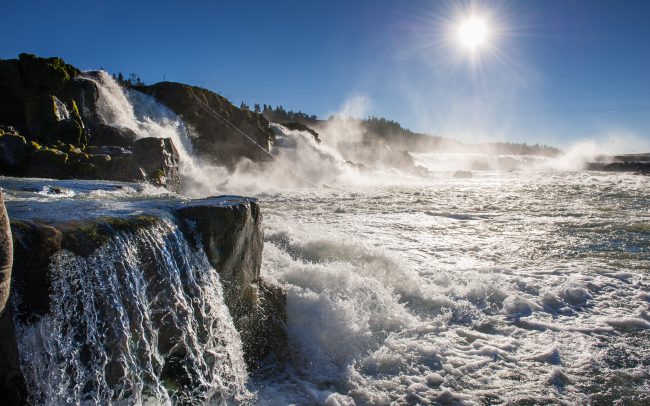Salmon in the Deschutes River rely on suitable-sized gravel and cobbles for spawning. We have designed an experimental gravel augmentation program to test the feasibility of using this type of restoration measure to increase and improve salmon spawning and incubation habitat, particularly downstream of dams.
Experimental augmentations were designed to mimic topography, flow depths, and velocities at existing gravel bars. We photographed the sites pre- and post-implementation using Low Elevation Aerial Photography (LEAP) to document sediment movement. We are continuing to work with PGE to monitor transport and topographic adjustments, spawning use, and gravel quality of the augmentation material. Biological monitoring will determine if and when the addition of new gravel would be necessary and beneficial to salmon populations in the Deschutes River.
This work is part of a larger overall study of assessing sediment transport following high flows, evaluating and mapping salmon spawning habitat. PGE will use the results of these studies to evaluate the potential impacts of the Pelton-Round Butte Hydroelectric Project on downstream fisheries and develop possible mitigation measures.









